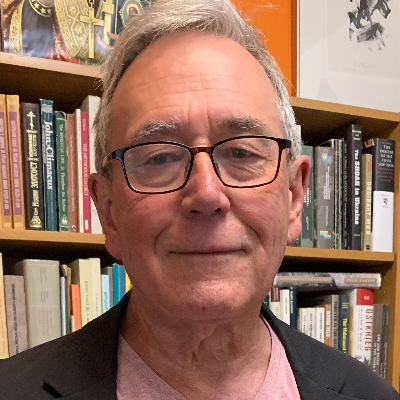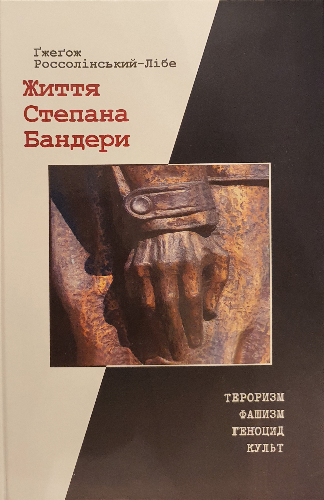
© Facebook John-Paul Himka
У жовтні 2025 року в Кишиневі вийшло друком російськомовне видання праці відомого канадського історика Джона-Пола Химки — “Українські націоналісти і Голокост. Участь ОУН і УПА в знищенні єврейського населення України, 1941–1944” (переклад Валентини Кулябіної, видавництво The Historical Expertise, 424 с.). Автор, який працював над книгою понад 14 років, зазначає у передмові: “Ця книга написана не в гніві, а в тривожному смутку й жаху”. Химка, спираючись на архівні документи, допити, німецькі та радянські звіти, а також свідчення очевидців, детально аналізує участь ОУН і УПА у переслідуваннях та знищенні єврейського населення під час Другої світової війни.
Історик описує три етапи цього процесу — від дій “народної міліції” у 1941 році до злочинів Української допоміжної поліції та участі УПА в етнічних чистках 1943–1944 років. Окремо автор наголошує на фальсифікації історії ОУН її учасниками після війни, коли вони прагнули дистанціюватися від співпраці з нацистами. “Слова не збігалися з діями. ОУН(Б) проголошувала рівні права для національних меншин, але водночас проводила масові вбивства поляків на Волині”, — пише Химка. Канадський дослідник також аналізує внутрішню структуру руху, стосунки між фракціями ОУН(Б) і ОУН(М), їхню взаємодію з німецькою окупаційною адміністрацією, а також післявоєнну реабілітацію бандерівського руху.
Попри складність і чутливість теми, Химка намагається не звинувачувати, а зрозуміти механізм насильства, вказуючи, що жорстокість не завжди походить від “монстрів”, а може бути наслідком ідеології та організаційних структур, які формують злочинну поведінку.
Книга вже викликала значний інтерес серед істориків і суспільствознавців, ставши однією з найгучніших публікацій року про історію ОУН та УПА. Книга Химки також є науковим підгрунтям до раніше виданої монографії польського історика Ґжеґожа Россолінського-Лібе, опублікованої українським видавництвом “Антропос-Логос-Фільм”. Електронна версія книги Химки вже доступна онлайн. За словами автора, його мета — допомогти українському суспільству звільнитися від історичних міфів і поглянути в очі минулому з гідністю, без заперечень і страху.
John-Paul Himka’s Book “Ukrainian Nationalists and the Holocaust” Sparks Broad Debate Across Eastern Europe
In October 2025, a Russian-language edition of the major work by renowned Canadian historian John-Paul Himka was published in Chișinău under the title “Ukrainian Nationalists and the Holocaust: The Participation of the OUN and UPA in the Extermination of Ukraine’s Jewish Population, 1941–1944” (translated by Valentyna Kuliabina, The Historical Expertise Publishing House, 424 pages). The author, who spent more than 14 years working on the book, notes in the preface: “This book was written not in anger, but in anxious sorrow and horror.”
Drawing upon archival documents, interrogation records, German and Soviet reports, as well as eyewitness testimonies, Himka provides a detailed examination of the role of the Organization of Ukrainian Nationalists (OUN) and the Ukrainian Insurgent Army (UPA) in the persecution and extermination of Jewish communities during the Second World War.
The historian outlines three stages of this process — from the actions of the “people’s militia” in 1941 to the crimes committed by the Ukrainian Auxiliary Police and UPA’s involvement in the ethnic cleansings of 1943–1944. Himka also emphasizes the postwar falsification of OUN’s history by its own members, who sought to distance themselves from their collaboration with the Nazis. “Words did not match deeds. The OUN(B) proclaimed equal rights for national minorities while simultaneously carrying out mass killings of Poles in Volhynia,” Himka writes.
The Canadian scholar also examines the internal structure of the nationalist movement, the relations between the OUN(B) and OUN(M) factions, their collaboration with the German occupation administration, and the postwar rehabilitation of the Bandera movement.
Despite the complexity and sensitivity of the subject, Himka avoids condemnation and instead seeks to understand the mechanisms of violence — noting that cruelty does not always arise from “monsters” but can stem from ideologies and organizational systems that shape criminal behavior.
The book has already attracted considerable attention among historians and social scientists, becoming one of the most widely discussed publications of the year on the history of the OUN and UPA. It is also viewed as a scholarly complement to the earlier biography of Stepan Bandera by Polish historian Grzegorz Rossoliński-Liebe, published in Ukraine by Antropos-Logos-Film.
The electronic edition of Himka’s book is already available online. According to the author, his goal is “to help Ukrainian society free itself from historical myths and face its past with dignity — without denial and without fear.”

©
1467